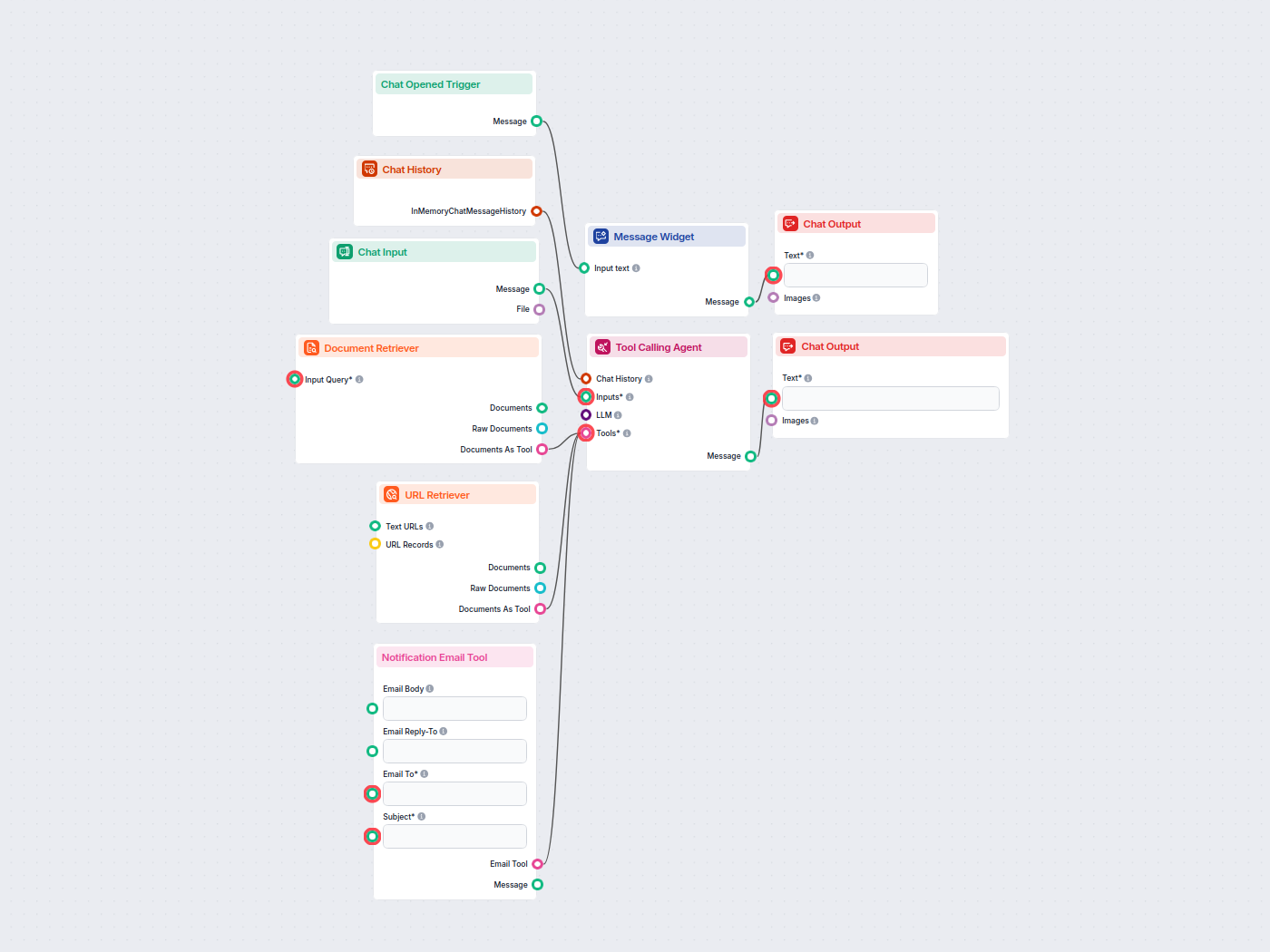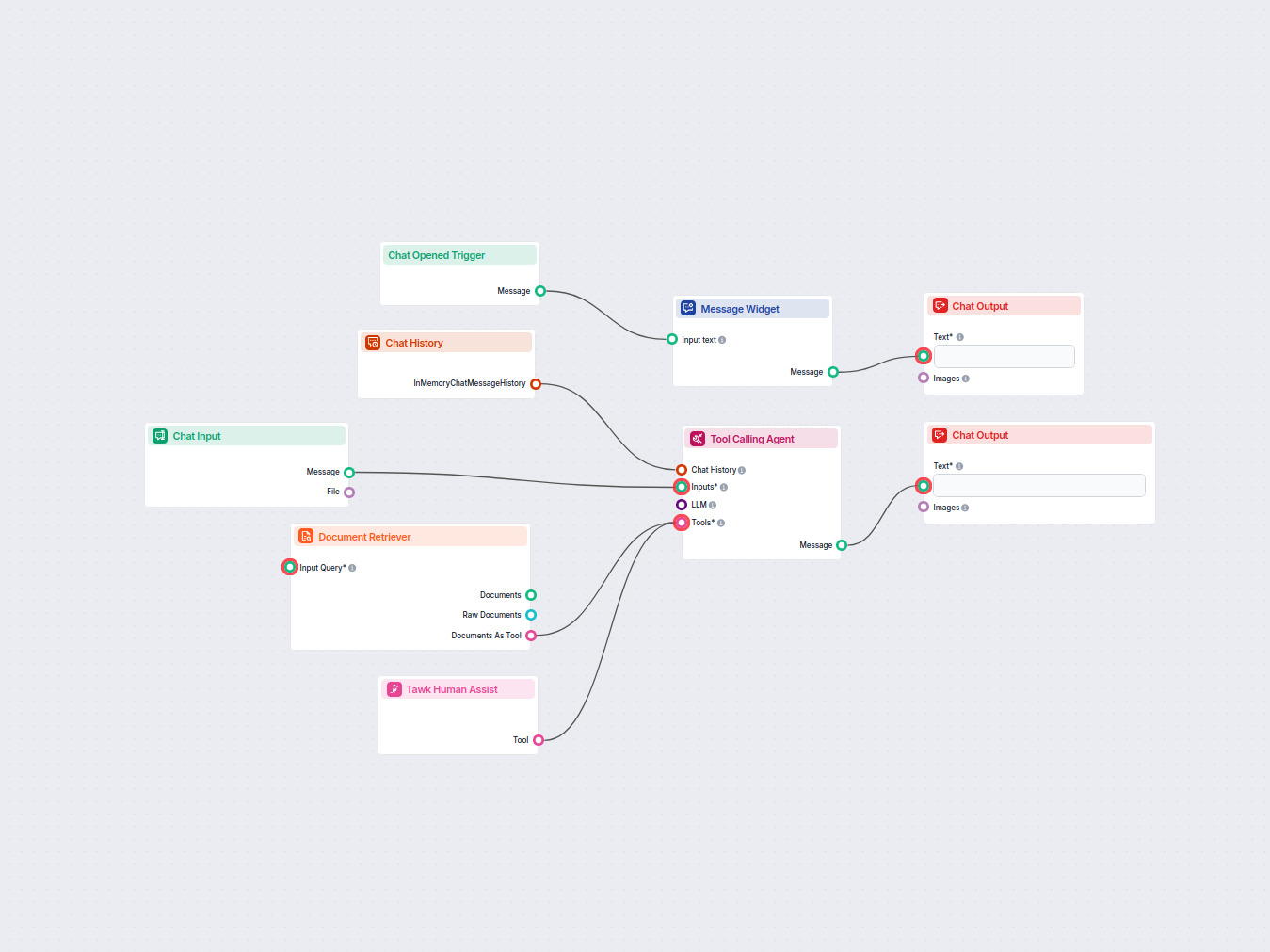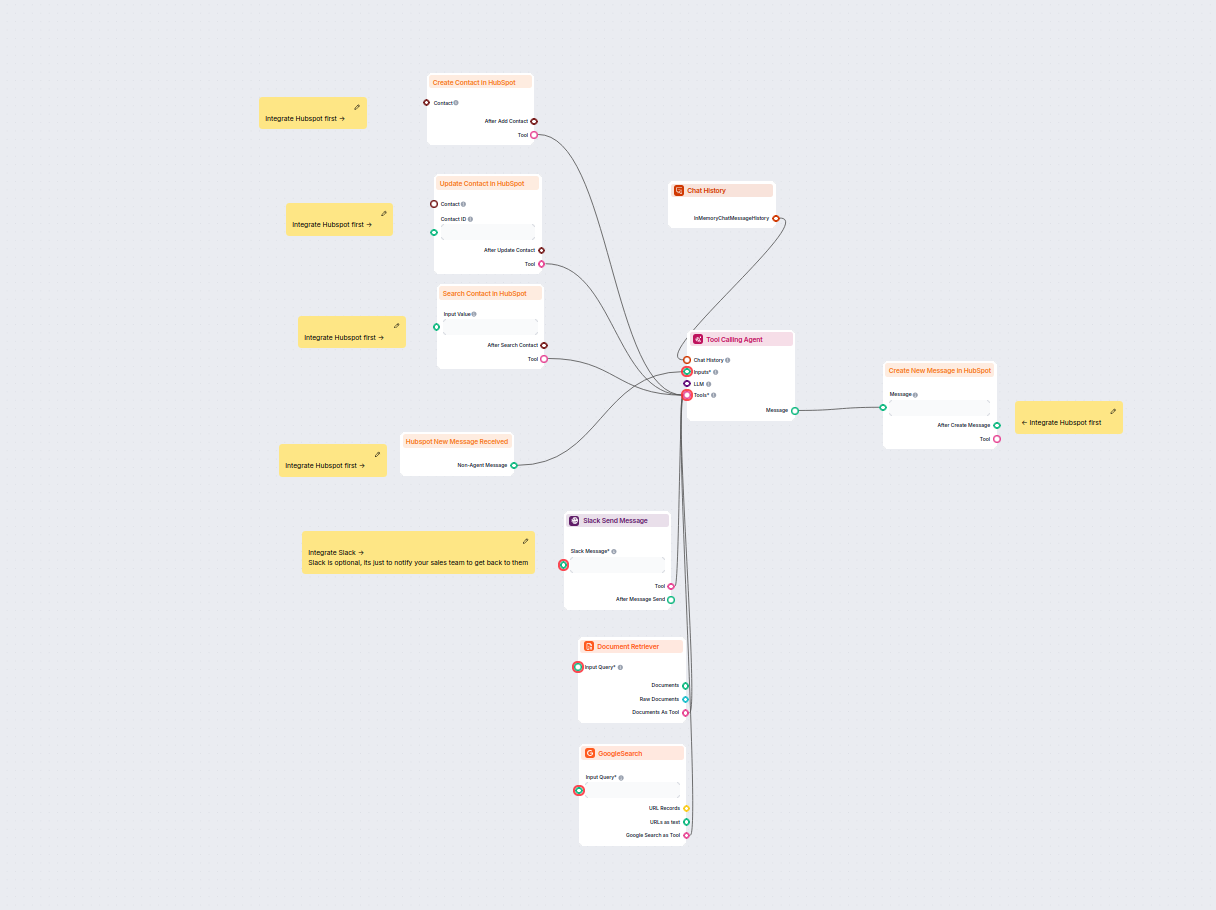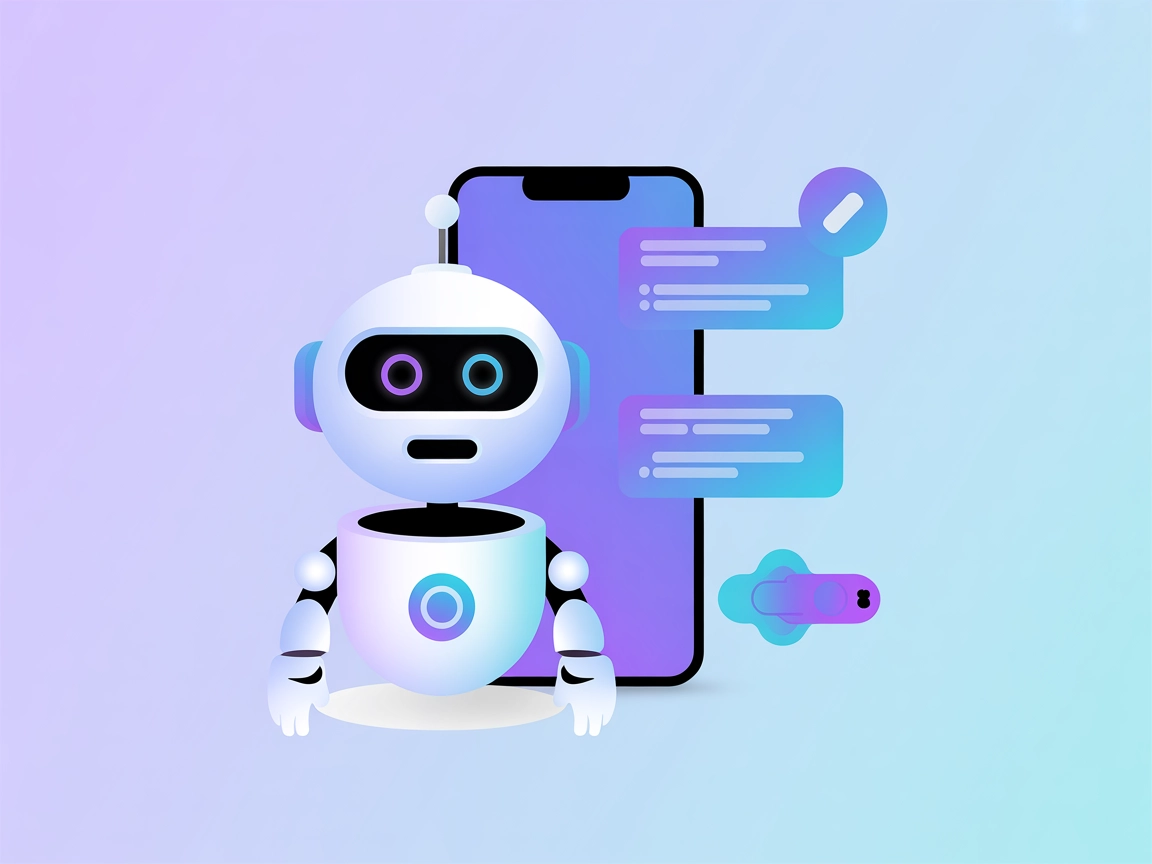This workflow implements a sophisticated lead generation chatbot that combines a customizable conversational interface, a knowledge base, and automated email notifications for capturing leads. The system is designed to provide personalized support to website visitors, answer their questions using internal knowledge sources, and alert your sales/support team when a visitor expresses buying interest.
Workflow Overview
The workflow can be broken down into several key stages:
- Chat Initiation and Welcome Message
- User Question Handling and Knowledge Retrieval
- Personalized Conversational Support
- Lead Detection and Notification Automation
- Output and Response Delivery
1. Chat Initiation and Welcome Message
When a visitor opens the chat widget, the workflow triggers an initial message:
- Chat Opened Trigger: Detects when a chat session starts.
- Welcome Message Widget: Automatically sends a friendly, informative welcome message explaining the chatbot’s capabilities and inviting the visitor to ask questions.
- Chat Output Node: Displays this message in the chat interface.
This ensures every user is greeted promptly and understands the benefits of interacting with the bot.
2. User Question Handling and Knowledge Retrieval
When a user submits a question or message:
- Chat Input Node: Receives input from the user.
- Chat History Node: Maintains the conversation context for personalized responses.
- Document Retriever: Searches available internal knowledge sources to find relevant information.
- URL Content Retriever: Optionally fetches and summarizes content from external URLs if needed.
These components equip the chatbot to find accurate, context-aware answers based on both internal and external knowledge.
3. Personalized Conversational Support
At the heart of the workflow is the Tool Calling Agent, a specialized AI assistant configured to:
- Act as a technical live chat customer support specialist.
- Search for answers using connected tools (knowledge base, document retriever, URL content retriever).
- If no relevant information is found, transparently inform the user.
- Support multilingual conversations, replying in the user’s language.
The agent uses the chat history, search tools, and user inputs to generate accurate, context-sensitive responses.
4. Lead Detection and Notification Automation
A standout feature of this workflow is its automated lead capture system:
- If the user expresses interest in your products or services, the agent:
- Asks for their email address (and optionally their name).
- Gathers the page URL and conversation summary.
- Uses the Notification Email Tool to send a structured email to your support/sales team.
- The email body is always in English and formatted as markdown, regardless of the user’s language.
- If possible, the company associated with the visitor’s email is identified and summarized.
- No emails are sent if the current URL contains the word ‘directory’ (to avoid irrelevant notifications).
This automates the process of capturing and forwarding qualified leads, reducing manual effort and response time.
5. Output and Response Delivery
- The chatbot’s responses (both the welcome and AI-generated answers) are displayed to the user in real-time using the Chat Output nodes.
Process Flow Table
| Step | Component(s) | Purpose |
|---|
| Chat initiated | ChatOpenedTrigger, MessageWidget, ChatOutput | Greet user and explain capabilities |
| Receive user input | ChatInput | Capture visitor’s questions/messages |
| Maintain chat context | ChatHistory | Track conversation for context-aware responses |
| Retrieve knowledge | DocumentRetriever, URLContent | Find relevant answers internally or from URLs |
| AI-powered support | ToolCallingAgent | Generate responses, handle lead detection, call tools as needed |
| Lead notification | NotificationEmailTool | Send structured lead alert to sales/support team |
| Display answers | ChatOutput | Show responses to user in chat interface |
Benefits for Scaling and Automation
- Automated Lead Capture: No more manual triage—every interested visitor is automatically flagged and routed to your team.
- 24/7 Personalized Support: The bot answers questions using up-to-date knowledge, improving customer experience and reducing support load.
- Data-Driven Insights: By capturing chat history and company info, your team receives rich context for every lead.
- Multilingual and Context-Aware: The workflow adapts to the user’s language and remembers chat context for more natural conversations.
- Scalable and Customizable: Easily expand the knowledge base, adjust notifications, or refine the workflow to fit your business needs.
Summary
This lead generation chatbot workflow offers a seamless, automated way to engage with website visitors, answer their questions, and efficiently capture high-quality leads. By integrating knowledge retrieval, conversational AI, and automated notifications, it helps businesses scale customer interactions and lead management with minimal manual intervention.





